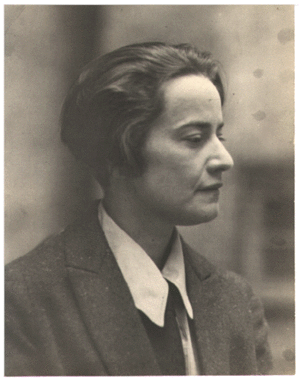Jane Grant facts for kids
Quick facts for kids
Jane Grant
|
|
|---|---|
 |
|
| Born |
Jeanette Cole Grant
May 29, 1892 Joplin, Missouri, United States
|
| Died | March 16, 1972 (aged 79) Litchfield, Connecticut, United States
|
| Occupation | Journalist |
Jane Grant was a pioneering journalist from New York City. She is best known for helping to start the famous magazine, The New Yorker, with her first husband, Harold Ross. She was also a strong supporter of women's rights throughout her life.
Contents
Jane Grant's Early Life and Journalism Career
Jane Grant was born Jeanette Cole Grant in Joplin, Missouri. She grew up in Girard, Kansas. When she was 16, Jane moved to New York City to become a singer. However, she soon found her true calling in journalism. She joined The New York Times newspaper.
Jane quickly moved up from the society section to become a full reporter. She was the first full-fledged woman reporter at the Times. For 15 years, she wrote about important topics. She often focused on women's issues. She asked public figures about their thoughts on women's roles. She also interviewed women who worked in jobs usually done by men.
Helping Soldiers During World War I
During World War I, Jane Grant used her talents as a singer and dancer to help out. She managed to get on a troopship heading to France. There, she joined the American Red Cross. She entertained soldiers with shows in Paris and at military camps.
While in France, she met many interesting people. One of them was Harold Ross, who would later become her first husband. They married in 1920. Many of the people she met in France later became part of a famous group called the Algonquin Round Table. After the war, Jane returned to work at the New York Times.
Fighting for Women's Rights
In 1921, Jane Grant joined the Lucy Stone League. This group was named after Lucy Stone, a famous women's rights activist. The league worked to help women keep their own last names after marriage. Jane herself kept her maiden name after both of her marriages.
In 1950, Jane and 22 other women restarted the Lucy Stone League. They had their first meeting in New York City. That same year, Jane convinced the United States Census Bureau to allow married women to use their birth surnames as their official names in the census. This was a big step for women's independence.
Jane was also one of the people who helped create the Newswomen's Club of New York. This club was formed in 1924. She served on its first board of directors.
Starting The New Yorker Magazine
In 1925, Jane Grant and Harold Ross started The New Yorker magazine. They had the support of a businessman named Raoul Fleischmann. Harold Ross is often given credit for the magazine's success as its editor. However, Ross himself said that the magazine would not have succeeded without Jane's help.
Jane was very important for the business side of the magazine. She helped find people to invest money to start it. She also brought her friend Janet Flanner to write for the magazine. Janet's "Letter from Paris" column became very popular and is still published today, though it now covers many other cities. During World War II, Jane also produced a special overseas issue of The New Yorker for soldiers.
Jane and Harold Ross divorced in 1929 after nine years of marriage.
Continuing Her Work and Later Life
During World War II, Jane Grant wrote for several magazines. These included Ellery Queen's Mystery Magazine and The New Yorker. In 1943, she wrote an essay called Confession of a Feminist for American Mercury. In this essay, she shared her experiences as a woman reporter. She also wrote about unfair laws and practices that affected women.
Jane continued to be very active in feminist causes. She reactivated the Lucy Stone League and worked to expand its goals. She kept fighting for women's rights into the 1960s. She supported the Equal Rights Amendment. She also served on the National Council of Women of the United States.
In 1939, Jane married William B. Harris. He was an editor for Fortune magazine. They moved from Manhattan to Litchfield, Connecticut. There, they started a plant nursery called White Flower Farm. In the 1950s, they turned it into a very successful mail-order business for home gardening.
In 1968, Jane Grant published a book about her life. It was called Ross, The New Yorker and Me. Her second husband, William Harris, encouraged her to write it. She dedicated the book to him.
Jane Grant passed away in 1972 at the farm in Connecticut she shared with her husband.
Jane Grant's Lasting Impact
Jane Grant left a lasting impact, especially in supporting women. In 1974, her husband William Harris was asked to donate money to the University of Oregon. After visiting the school, he agreed to fund a center. This center would focus on research about women and gender studies.
In 1976, Harris donated all of Jane Grant's papers to the university. When he died in 1981, he left $3.5 million in Jane's name. This money was used to create the Center for the Study of Women in Society. This center continues her work of supporting and understanding women's roles.
Jane Grant's life story has also been told in movies. The actress Martha Plimpton played her in the 1994 film Mrs. Parker and the Vicious Circle.

